Tans Peru Airlines:

TANS Perú, an acronym for Transportes Aéreos Nacionales de Selva, was a Peruvian airline based in Lima. The airline was headquartered at the Miraflores District in the capital city of the country. Completely state-owned, the carrier operated scheduled domestic passenger and cargo services from its main base at Jorge Chávez International Airport.
About 737-200:

The 737-200 was a 737-100 with an extended fuselage, launched by an order from United Airlines in 1965 and entered service with the launch customer in April 1968. Its unit cost was US$4.0M (1968) ($36.2M today). The -200's unit cost was US$5.2M (1972)[33] ($39.1M today). The 737-200 Advanced is an improved version of the -200, introduced into service by All Nippon Airways on May 20, 1971. After aircraft #135, the 737-200 Advanced has improved aerodynamics, automatic wheel brakes, more powerful engines, more fuel capacity, and hence a 15% increase in payload and range over the original -200s and respectively -100s. The 737-200 Advanced became the production standard in June 1971. Boeing also provided the 737-200C (Combi), which allowed for conversion between passenger and cargo use and the 737-200QC (Quick Change), which facilitated a rapid conversion between roles. The 1,114th and last delivery of a -200 series aircraft was in August 1988 to Xiamen Airlines.
Nineteen 737-200s, designated T-43, were used to train aircraft navigators for the U.S. Air Force. Some were modified into CT-43s, which are used to transport passengers, and one was modified as the NT-43A Radar Test Bed. The first was delivered on July 31, 1973, and the last on July 19, 1974. The Indonesian Air Force ordered three modified 737-200s, designated Boeing 737-2X9 Surveiller. They were used as Maritime reconnaissance (MPA)/transport aircraft, fitted with SLAMMAR (Side-looking Multi-mission Airborne Radar). The aircraft were delivered between May 1982 and October 1983.After 40 years, in March 2008, the final 737-200 aircraft in the U.S. flying scheduled passenger service were phased out, with the last flights of Aloha Airlines.As of 2018, the variant still saw regular service through North American charter operators such as Sierra Pacific Airlines.
The short-field capabilities of the 737-200 led Boeing to offer the "Unpaved Strip Kit" (see the Air North example, right). This option reduced foreign object damage when operated on remote, unimproved or unpaved runways, that competing jetliners could not use safely. The kit included a gravel deflector on the nose gear and a vortex dissipator extending from the front of the engine. Alaska Airlines used the gravel kit for some of its combi aircraft rural operations in Alaska until retiring its -200 fleet in 2007. Air Inuit, Nolinor Aviation and Buffalo Airways still use the gravel kit in Northern Canada. Canadian North also operated a gravel-kitted 737-200 Combi, but this was due to be retired in early 2023.
As of September 2023, a relatively high number of 737-200s remain in service compared to other early jet airliners, with fifty examples actively flying for thirty carriers. During the 737 MAX groundings, older 737s, including the 200 and Classic series, were in demand for leasing. C-GNLK, one of Nolinor's 737-200s, is the oldest jet airliner in commercial service as of 2024, having entered service 50 years prior in 1974
About O-1781-P:

Manufacturer Serial Number (MSN) : 21002
Line Number : 385
Aircraft Type Built as Boeing 737-200
Age : 32.1 Years at the end of its life
Production Site : Renton (RNT)
Airframe Status : Broken up Dec 2006 at Lima
Operator History
3 Airlines Bignest In South American Used
PP-VMG - Varig : Nov 1974-Jun 2003
OB-1728-P - Aero Continente : Jun 2003-Oct 2004
OB-1781-P - Tans Peru : Oct 2004
Credit:
Plane:
DickyDuncan
Remaker65998
Livery:
Me
DONT USE THIS PLANE MAKE CRASH OR ELSE!!!!!!!!!!!!!!!!!!!!!!!!!!!!!!!!!!!!!!!!!!!!!!!!!!!!!!!!!!!!!!!!!!!!!!!!!

Specifications
General Characteristics
- Successors 2 airplane(s) +14 bonus
- Created On Windows
- Wingspan 95.7ft (29.2m)
- Length 102.3ft (31.2m)
- Height 41.5ft (12.6m)
- Empty Weight N/A
- Loaded Weight 45,614lbs (20,690kg)
Performance
- Power/Weight Ratio 1.092
- Horse Power/Weight Ratio 0.065
- Wing Loading 25.7lbs/ft2 (125.2kg/m2)
- Wing Area 1,778.2ft2 (165.2m2)
- Drag Points 10175
Parts
- Number of Parts 441
- Control Surfaces 9
- Performance Cost 2,671

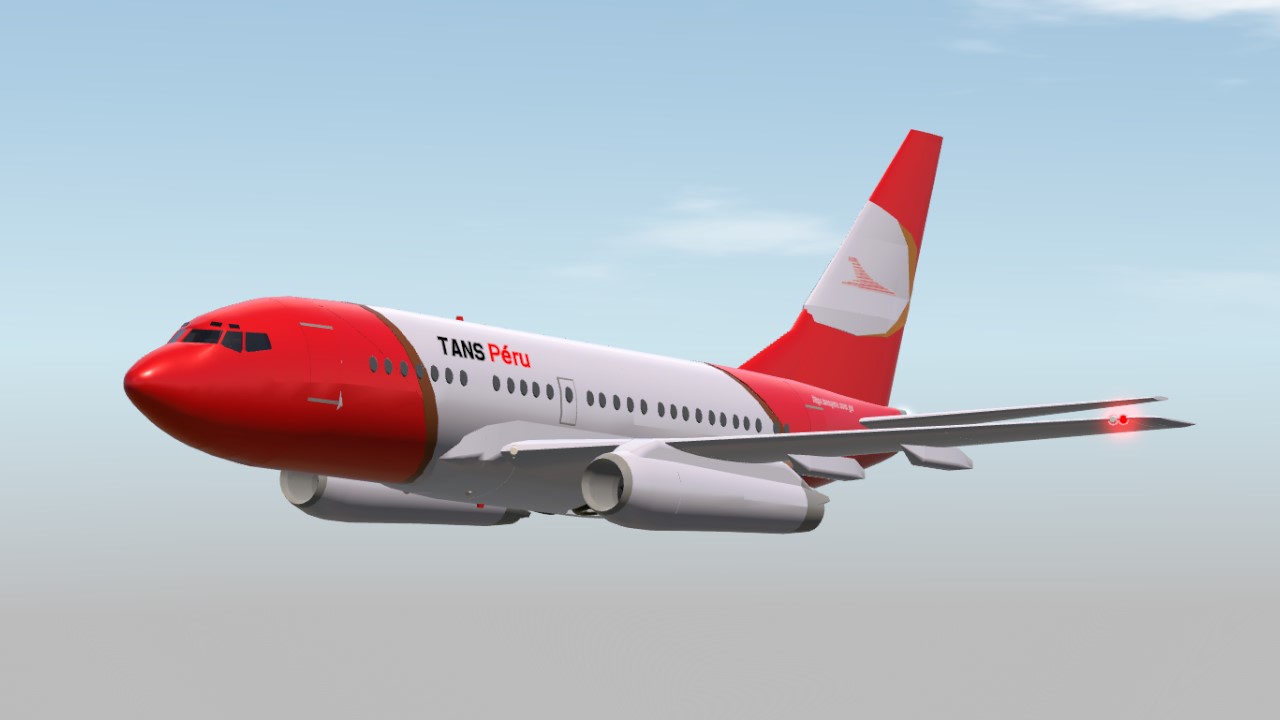
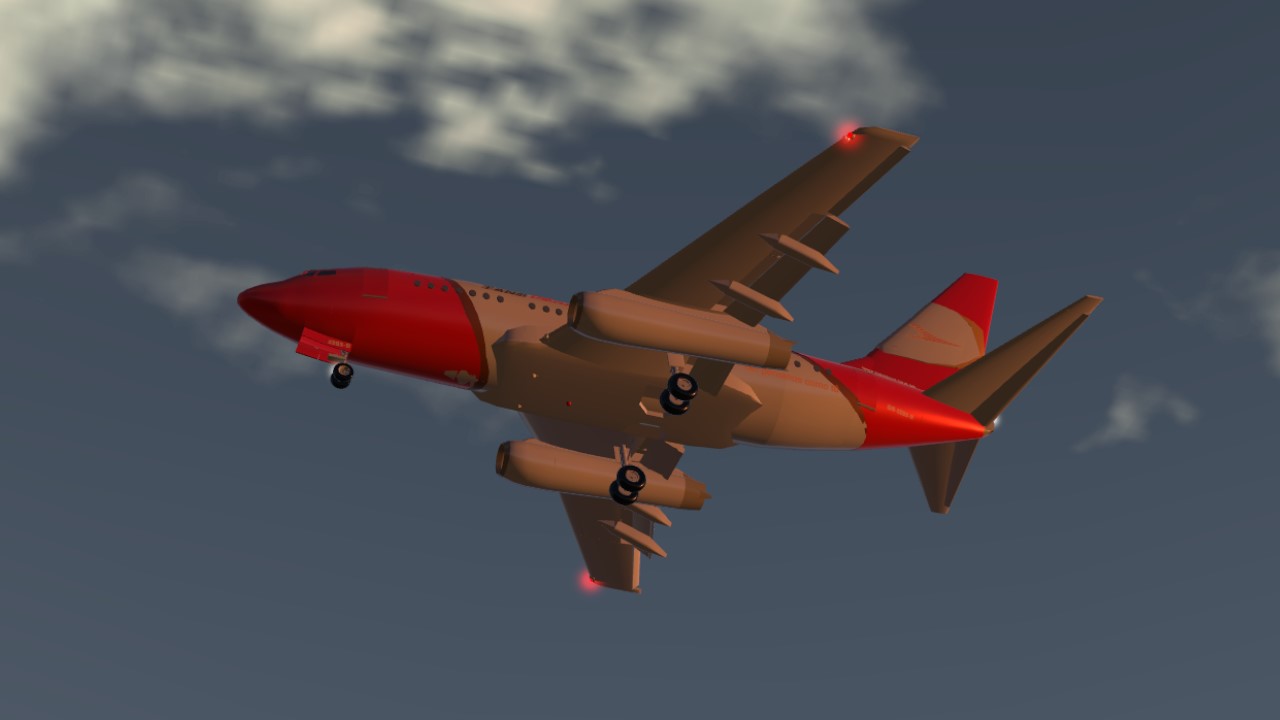
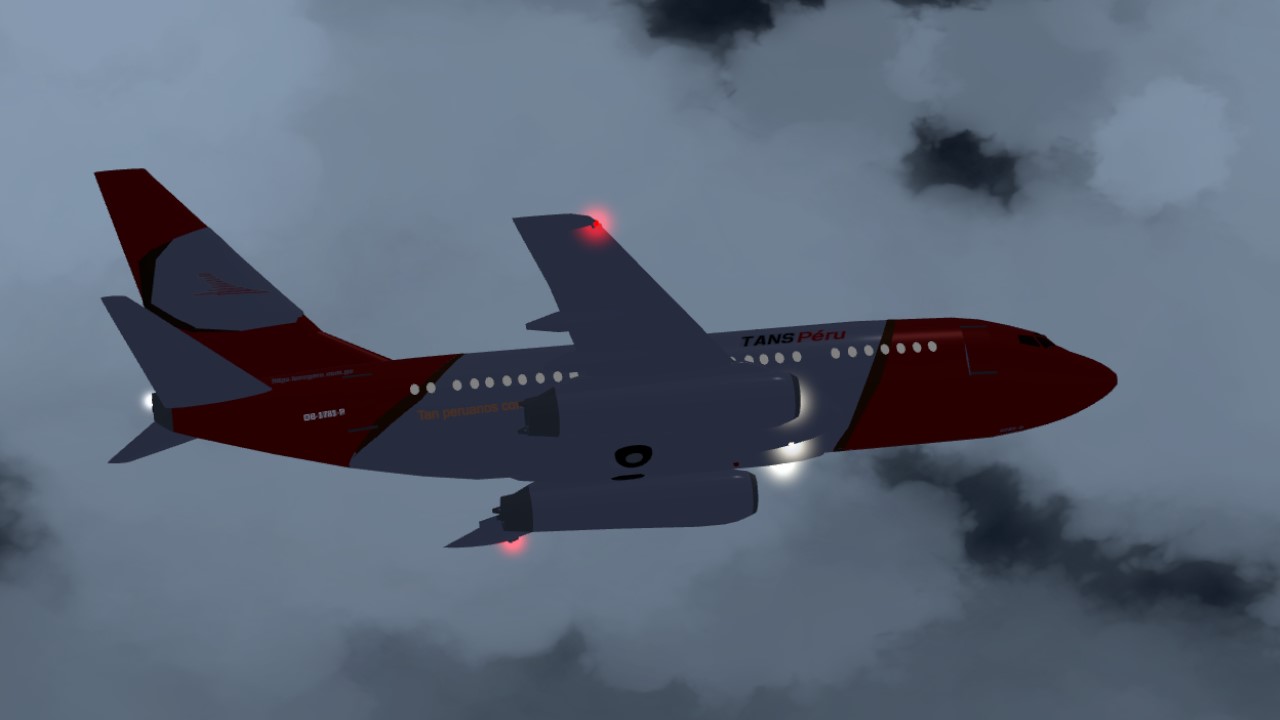
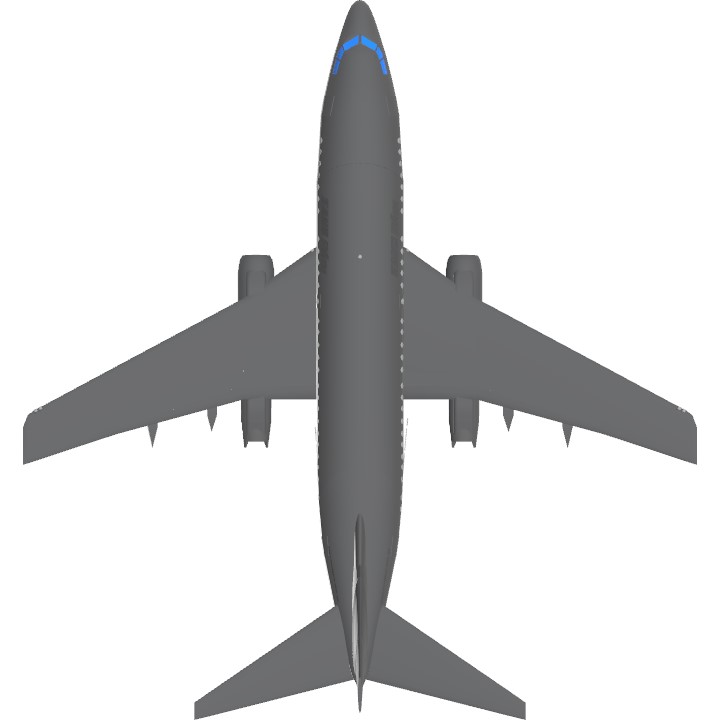
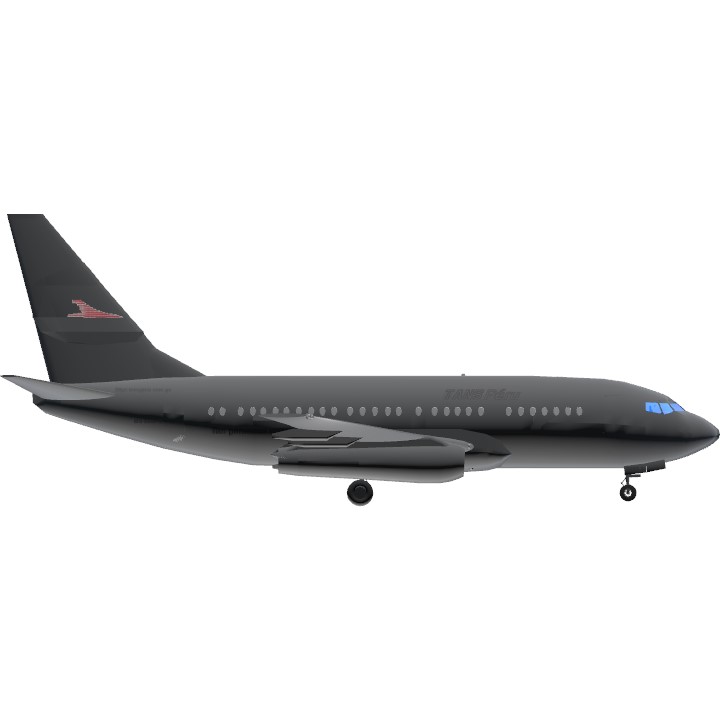
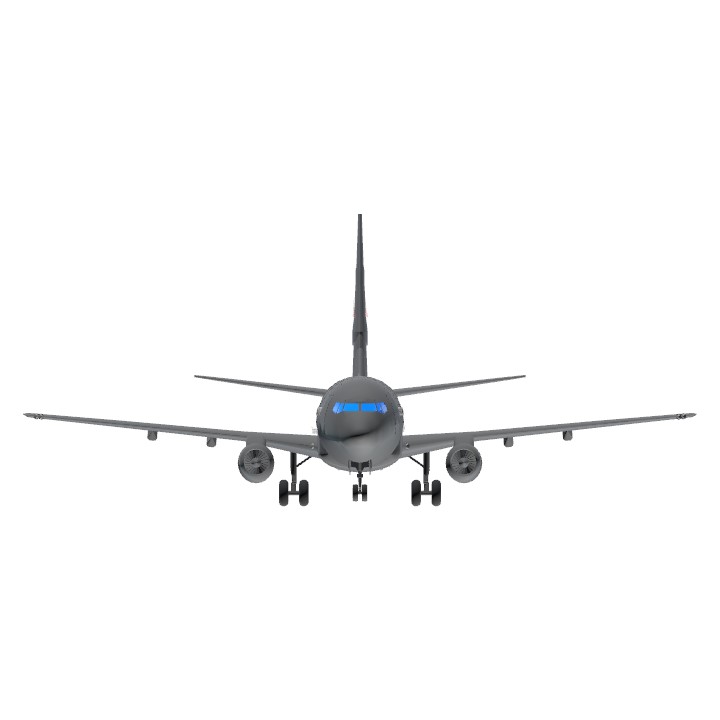
Update :
- Nose,tall,rudder change to like a plane in real life
- Colur change have 3 colurs in livery
- Lightness in tall label low
O-1781-P Is not plane crash flight 204 you see its like a O-1801-P but its not